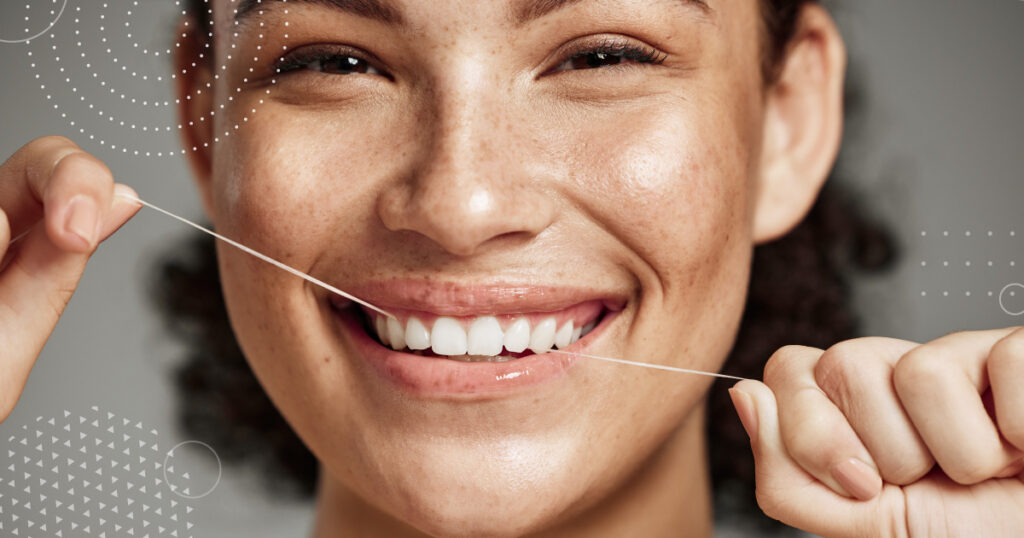
Flossing might seem like a simple task, but there’s more to it than meets the eye. Let’s discuss some fascinating facts about floss that will change the way you think about your dental hygiene routine.
1. The Origins of Floss
Flossing is not just a modern invention – it has a long history dating back to prehistoric times. Archaeologists have found evidence of early humans using thin strips of horsehair to clean between their teeth. However, it was not until the early 19th century that floss, as we know it, was invented. A New Orleans dentist named Levi Spear Parmly introduced waxed silk thread as a means to clean between teeth. This simple innovation has evolved into the variety of flossing products we have today.
2. Types of Floss
There are several types of floss available today, each designed to cater to different needs and preferences. Here’s a quick overview:
- Waxed floss – Coated with a thin layer of wax, making it easier to slide between tight teeth.
- Unwaxed floss – Made of thin nylon, it can fit into smaller spaces but may shred more easily.
- Dental tape – Wider and flatter than traditional floss, ideal for people with larger gaps between their teeth.
- Super floss – Contains three components – a stiffened-end threader, spongy floss, and regular floss – perfect for cleaning braces, bridges, and wide gaps.
Choosing the right type of floss can make your daily routine more effective and comfortable.
3. The Benefits of Flossing
Flossing provides several key benefits that brushing alone cannot achieve:
- Prevents gum disease – Regular flossing helps remove plaque from areas between teeth where a toothbrush can’t reach, reducing the risk of gingivitis and periodontitis.
- Reduces cavities – By cleaning between teeth, flossing prevents the buildup of plaque that can lead to tooth decay.
- Fresher breath – Flossing removes trapped food particles that can cause bad breath, keeping your mouth feeling fresher.
4. How to Floss Properly
Flossing correctly is essential for it to be effective. Here are some simple steps:
- Get 18 inches of floss and loop most of it around one middle finger. Wrap the remaining floss around the middle finger of your other hand. This finger will collect the used floss as you go.
- Hold the floss between your index fingers and thumbs.
- In a gentle manner, slide the floss between your teeth.
- Create a C shape with the floss around a tooth and gently ease it under the gum line. Move it up and down to clean the side of the tooth.
- Repeat for each tooth, including the back side of your last teeth.
Proper technique ensures that you remove as much plaque and debris as possible.
5. Flossing Myths Debunked
There are many misconceptions about flossing that can prevent people from making it a regular habit. Let’s clear up a few:
Myth: Flossing is only necessary if you have food stuck in your teeth.
Fact: Flossing is essential for removing plaque that a toothbrush cannot reach.
Myth: My gums bleed when I floss, so I shouldn’t do it.
Fact: Gums bleed when they are inflamed due to plaque buildup. Regular flossing can reduce inflammation and bleeding over time.
Myth: I brush my teeth really well, so I don’t need to floss.
Fact: Brushing alone cannot reach all the nooks and crannies between your teeth. Flossing is necessary for complete oral hygiene.
6. Tips for Making Flossing Easier
Flossing doesn’t have to be a chore. Here are some tips to make it more manageable:
- Choose the right time – Find a time that fits into your daily routine, whether it’s in the morning, after lunch, or before bed.
- Use floss holders – If you find it difficult to handle floss, consider using a floss holder or pick.
- Be consistent – Make flossing a daily habit. The more you do it, the easier it will become.
- Involve the family – Encourage your children to floss by making it a family activity. Use fun flossers in different colors or with their favorite characters.
7. Innovations in Flossing
Modern technology has introduced new ways to floss that can make the process more efficient and enjoyable. Some of these include:
- Water flossers – Devices that use a stream of water to clean between teeth. They are especially useful for people with braces or other dental appliances.
- Flossing sticks – Pre-threaded floss on a small stick, making it easier to floss without having to wind the thread around your fingers.
These tools can help make flossing a more pleasant experience for everyone.
Flossing is a simple yet powerful tool for maintaining oral health. By learning some facts about flossing, and understanding its history, types, benefits, and proper techniques, you can make it a regular and effective part of your dental hygiene routine. Remember, a few minutes of flossing each day can lead to a lifetime of healthier teeth and gums.
For more tips and advice on maintaining great oral health, visit Dallas Dental Wellness. We’re here to help you and your family achieve the brightest smiles!
Sources:
- “How Dental Floss Became a Thing in the First Place,” Time Magazine
- “Types of Dental Floss and How to Choose,” Fortson Dentistry
- “Floss/Interdental Cleaners,” American Dental Association
- “How to Floss,” American Dental Association
- “Debunking flossing myths: Your guide to oral hygiene,” India Today
- “Is it more effective to floss teeth with a water flosser or with standard dental floss?” Mayo Clinic
